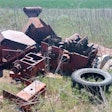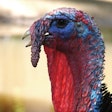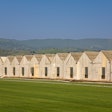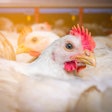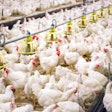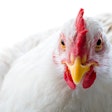
The effectiveness of any biosecurity program is affected by what is in the program and whether the program is being followed. All it takes is one instance of a policy circumvented on a day that an infectious disease is waiting outside the poultry house door. Industry biosecurity practices proved inadequate in stopping the introduction and spread of highly pathogenic avian influenza in the U.S. Midwest in spring 2015.
Dr. James Roth, director, Center for Food Security and Public Health, Iowa State University College of Veterinary Medicine, said analysis of the avian flu outbreak provides poultry producers with some guidance on where to focus their biosecurity efforts.
Roth told the audience at WATT Global Media’s “Biosecurity can keep avian flu out of your poultry house” webinar, sponsored by Harris Vaccines, that movements of people and equipment and procedures for handling manure and on-farm mortalities were found to be correlated to spread of the disease.
“These elements should be the highest priority in allocating resources for improved biosecurity,” he said.
USDA APHIS worked with state, academic and industry experts to develop biosecurity resources to aid poultry producers in developing and implementing effective biosecurity programs.
“The biosecurity recommendations emphasize three concepts that may be new to existing biosecurity plans and should be strongly considered for implementation in all commercial operations,” Roth said.
These concepts are that a biosecurity plan should have a biosecurity officer, there should be a line of separation for each building, and the farm should have a perimeter buffer area.
Biosecurity officer
“The biosecurity officer should be an experienced poultry veterinarian or should consult with one,” Roth said. “He or she is responsible for developing a site-specific biosecurity plan and training all personnel who enter the farm.”
The biosecurity officer should have the authority to ensure compliance with biosecurity protocols and take corrective action as needed. He or she continuously adapts the plan and procedures to address changing risks. It is important that the plan be site specific, because every farm is different. The biosecurity officer ensures that farm employees, contract crews, truck drivers and service personnel are trained on site-specific biosecurity standard operating procedures.
After training is completed, the biosecurity plan needs to be audited and procedures need to be verified. Without continuous reinforcement of the importance of always following the specified procedures, employees will take the path of least resistance and do what is easiest. Studies have shown that compliance with even some simple biosecurity procedures can be less than 50 percent when there is not follow-up from supervisors to reinforce the importance of compliance. Everyone must follow biosecurity procedures, even the company president. Actions speak louder than words.
Line of separation
An essential component for improved biosecurity is to implement a “line of separation” for each building. The walls of the poultry house form the line of separation and should separate poultry from potential sources of the avian flu virus. The line of separation is a critical control point for preventing exposure of poultry to the virus. The plan must address how this line will be defined and defended for each poultry house or set of connected houses.
One example of a line of separation is the “Danish entry system” which utilizes a solid bench to divide the anteroom of a poultry house. On the “exterior” side of the anteroom, an individual wishing to enter the poultry house would, at minimum, remove the boots they wore outdoors while sitting on the bench. Next, the individual would swing his or her legs over and put on footwear that is kept on the poultry side of the anteroom for use in the bird housing area only.
Shower-in and shower-out facilities would still employ the Danish entry system for entry into the poultry housing portion of the poultry houses. The most effective systems would require exchanging clothes worn outside the perimeter buffer area of the farm to be changed for clean farm clothing. Hands should also be washed or sanitized when entering the farm and when crossing the line of separation.
Personal items, such as cellphones, watches and jewelry should not cross the line of separation unless they can be disinfected. All equipment and supplies that cross the line of separation must be cleaned and disinfected, or be from a known clean source. The same procedure will be followed in reverse when crossing back to the outside of the line of separation.
Perimeter buffer area
The perimeter buffer area concept is aimed at reducing virus entering and contaminating the production site. Complete exclusion is not possible, but reducing virus load in the environment immediately outside the poultry houses will reduce risk.

Center for Fod Security and Public Health, Iowa State University | The perimeter buffer area in green is fenced to exclude vehicle and human traffic. Note that feed can be delivered without the trucks entering the perimeter buffer area.

Center for Fod Security and Public Health, Iowa State University | In this example, the perimeter buffer area is fenced off to exclude traffic to the central feed mill.
The perimeter buffer area is an outer control boundary set up around the poultry houses to keep vehicles, personnel and equipment that have not been cleaned and disinfected from contaminating areas near the poultry houses. The perimeter buffer area should be set up so that nonessential vehicles do not enter it and therefore do not need to be cleaned and disinfected each time they arrive at the site. An example of this would be having the poultry houses fenced off from the drive where the feed trucks come up to the feed bins. The tires of the truck and the truck driver would remain outside the perimeter buffer area, so the truck or its tires wouldn’t have to be washed before entering the farm.
Roth said that if dead birds are removed from the farm for disposal, the bin or can they are stored in could be placed at the perimeter fence so that equipment and personnel coming to remove the carcasses wouldn’t enter the perimeter buffer area. Composting mortalities on-site also could provide an alternative that would reduce traffic to the farm.
Additional resources
To assist poultry producers in implementing effective biosecurity plans, USDA APHIS has prepared the following items which are available for download:
- Biosecurity checklist
- Biosecurity Officer Information Manual
- Training materials for employees (English and Spanish)
Read about a poultry farm that employs the concepts of “line of separation” and “perimeter buffer area” in its biosecurity program








